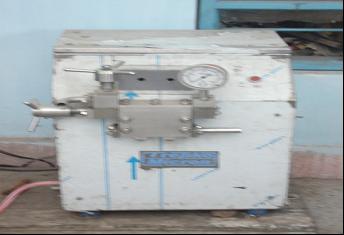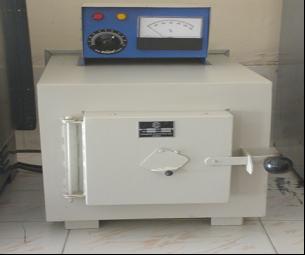Department of Animal Husbandry and Dairy Science
About Department
Historical Perspective of the Department
India has basically been an agricultural country and it is likely to continue to be so for a long time to continue. At present 70 per cent of Indians depends for their livelihood on agriculture. Thirty percent of land holdings are held by 70 per cent of small and marginal farmers who held 80 per cent of the total livestock in the country. Crop agriculture in India depends mainly on bullocks, which contribute approximately 40,0000 MW of power to agriculture.
The production and use of animal products in the human diet is receiving tremendous attention. With object in view, the need of developing Animal Husbandry is recognized very well. The other objectives are to provide animal power for farming, adoption of better land use pattern, the land which is not suited for arable cropping should be put under grass or tree so much needed for protection of soil. Among other objectives of Animal Husbandry, the utilization of agro-industrial byproducts for converting those in to valuable animal products so much needed by all of us. The creation of thousand of employment opportunities through out the year by adopting animal industry on large scale shall also be a part of the objectives of animal husbandry in India.
It is therefore essential to have the basic knowledge to the students of agriculture about the animal husbandry and dairying for animal production, milk production and milk products.
The dairy unit was established with a small herd of cows and buffaloes in the year 1958 with the object to impart training to the under¬graduate students of agriculture. With the establishment of Agricultural University, the college dairy was converted in to University Livestock Instructional Farm in the year 1969 and was shifted to the present premises in the year 1971. The objects of maintaining the cows and buffaloes at Livestock Instructional farm Akola are:
- To cater the need of undergraduate and postgraduate teaching programme.
- To fulfill the requirement of research facilities
- To provide the milk for research, students and staff members.
Livestock Unit
A small unit of dairy was available (about 178 animals of all category) before the formation of University. During those days, this unit was maintained mainly for the teaching purpose of undergraduate course. With the formation of University, the postgraduate classes were started which has demanded the need of increase in livestock and housing facilities. Accordingly new structures were constructed in 1972 to accommodate about 250 to 300 animals of various categories. Purchasing some animals and transferring few animals from college of Agriculture, Nagpur increased the herd strength. Thus, from 1972 onwards the herd strength of dairy unit at Akola was between 250 – 300 animals.
Efforts are being made to maintained and conserve the nine different breeds of indigenous cows with the help of artificial insemination technique.
It is rather very difficult to demark the herd strength essential for carrying out the teaching and research programme. The requirement of animals for research will depend upon the nature and type of research project, number of treatments involved and number of students working time. At present, the undergraduate strength is nearly 500 students in various semesters. The animal husbandry and dairy courses are offered in First, Fourth, Fifth and Sixth semesters and experimental courses during eight semester. A batch of 30 students is posted practical class. With regard to Postgraduate classes, strength of 20 students are admitted (10 students for Animal Husbandry and 10 students for Dairy Science in major field). Research programme is also carried out for partial fulfillment of the postgraduate teaching programme. Therefore, all the students will have to conduct the project on animals from various categories. The involvement of animal strength in research programme will depend upon the nature project.
The present housing facilities available at dairy unit are sufficient for 290 animals. Thus, the strength worked out can be accommodated within present resources. There are 8 different types of sheds. However present structure needs some modification & repairs. The work of repair is in progress
Academic Programmes
| 1. M.Sc. (Agri.) Animal Husbandry | 2 Years | Intake Capacity |
9 |
| 2. M.Sc. (Agri.) Dairy Science | 2 Years | Intake Capacity | 9 |
| 3. Ph.D. Animal Husbandry | 3 Years | Intake Capacity | 1 |
| 4. Ph.D. Dairy Science | 3 Years | Intake Capacity | 1 |
Infrastructure Facilities
- Total Land 44.53 ha
- Area under cultivable land 30.29 ha
- Area under seasonal crop 29.03 ha
- Area under perennial grasses 1.26 ha
- Area under building, road etc 14.24 ha
Following laboratories are established in the Department
- Livestock Instructional Farm
- Animal Nutrition
- Animal Husbandry
- Dairy Bacteriology
- Dairy Chemistry
- Dairy Technology
Facilities available in the laboratories for Practical and Research Work.
| Animal Nutrition Laboratory | ||
|

|
|
| Animal Husbandry Laboratory | ||
|

|
|
| Dairy Technology laboratory | ||
|

|
|
| Dairy Bacteriology Laboratory | ||
|

|
|
| Dairy Chemistry Laboratory | ||
|

|
|
| Livestock Instructional Farm | ||
|
 |
Mandate
- Mandates of department are teaching to under graduate and post graduate students.
- Perform the research on animal husbandry and dairy science.
- Extension activities for the benefit of farmers and dairy owners for improvement of livestock and milk production.
Research Activities
The research programme is conducted by the department in 3 ways i.e. Post Graduate Research, Departmental Research and Personal Research of Staff. So far 308 and 8 students have completed their post graduate and Ph.D. research in the subject since 1969 to 2007 respectively. These students worked on various topics in the specialized fields of the subject.
Major Area of the Research carried by the Students and staff
A. Animal Husbandry
- Characterization of breeds of cattle and buffalo
- Nutritional status of animal in Vidarbha region
- Growth performance of heifer by feeding different feeds and fodder
- Effect on milk production by feeding different feeds and fodder
- Enrichment of low quality feeds by different methods
- Fodder value of different feed stuff
- Fodder value of different tree leaves in the forest
- Efficiency of milk production in cows and buffaloes
- Care and management aspect
- Performance of crossbred cattle in rural area
- Constraints in adoption of improved dairy management practices.
- Cultivation of various fodder crops for yield and chemical composition study
- Studies on milk cooperatives society
- Water consumption for milk production
- Effect of mineral supplements on milk production
- Nutrition evaluation of feeds and fodder.
B. Dairy Science
- Studies on methods of preparation of different indigenous milk products
- Chemical analysis of milk and milk products
- Preparation of value added products
- Preparation of milk products blending with soymilk, coconut milk and pea-nut milk.
- Study on shelf life of milk and milk products
- Utilization of high acidic milk for preparation of milk products
- Utilization of fruit pulps and juices in milk products
- Beverage production from whey.
Research Achievements
Efforts are being made to maintain and conserve the different breeds of indigenous cow, with the help of artificial insemination technique by using semen procured from BAIF, Urdikanchan, Pune and other semen laboratories. However the semen of Gaolao breed cow and buffalo strain of Nagpuri breed is not available and hence breeding bulls are kept on the farm for breeding purpose for the animals. These breeds are meant for milk, teaching, research and demonstration to farmers and extension workers.
Extension Activities and Achievements
- Participation of staff members in the Krishi Melawas organized by University and Other Agricultural departments.
- Participation in the exhibition , Shiwarpheri, Shetkari Dilasa Abhiyan, Shetkari Dindi and Samuhik Janjagran Abhiyan-2007 (organized by the University).
- Publication of article in news paper, Krishi Patrika.
- Massages to Akashwani kendra Akola for the farmers.
- Organized Doordarshan programme.
- Field visits arranged by the department.
- Farmers visited the department.
- Arranged the training for the rural youth Self employment training to the rural youth on milk procurement and milk processing, fodder production and preservation.
- Published booklets for the farmers.
- Farmers of Vidarbha region and dairy farmers in particular visited the dairy farm and provided the guidance regarding the breeds , care and Management, feeding and breeding , health care.
- Books, leaflets, folders are published by the department on animal husbandry.
- Two villages of each tahsil of Akola district were selected for demonstration of low quality fodder.
Research Recommendations (Approved in AGRESCO)
| 1. |
Studies undertaken during 1984, revealed that, it is advantageous to have crossbred animals with 50 per cent Jersey exotic inheritance for optimum milk production. |
||||||||||||||
| 2.
|
Studies conducted during 1981-82 to 1985-86 on economical rearing of Sahiwal, Sahiwal x Jersey and Sahiwal x Holstein Friesian half bred calves revealed that, economical rearing of calves can be done by feeding milk replacer as substitute to milk, without affecting their growth and health.
|
||||||||||||||
| 3. |
Draft efficiency of Purnathadi buffalo bullock and crossbred bullocks indicated that more speed of work (7 per cent) and higher generation of HP (15 per cent) can be obtained from crossbred bullocks over Purnathadi buffalo bullocks.
|
||||||||||||||
| 4.
|
From the study conducted to find out the effect of feeding of sunflower and soybean cake vis-à-vis groundnut cake, it was observed that the total milk production, total fat, SNF and TS were not influenced due to feeding of various cakes. However, on the basis of cost economics, sunflower cake may be included in concentrates.
|
||||||||||||||
| 5. |
Mixed cropping of berseem and oat on the total green out turn revealed that mixed cropping resulted in higher production of green out turn. In mixed cropping seed rate of 20 kg berseem + 20 kg oat per ha was therefore recommended.
|
||||||||||||||
| 6. |
Studies conducted to find out the superiority of different grasses revealed that Anjan grass may be grown as a pasture under irrigation.
|
||||||||||||||
| 7. |
More green forage and dry matter yield can be obtained by planting anjan + glycine or marvel + glycine on field boundaries to provide quality forage to animals.
|
||||||||||||||
| 8.
|
Feeding of green improved Ramkel as a substitute to concentrate is recommended as under.
|
||||||||||||||
| 9. |
Stylosanthus hemata is recommended for growing on lighter soils. It is further recommended to grow this fodder crop on bunds and grazing yard to provide quality fodder. |
||||||||||||||
| 10.
|
Feeding management of concentrates + roughages in lactating animals revealed that milk production in cows and buffaloes can be enhanced by 7 to 10 per cent without affecting quality of milk by feeding concentrates soaked in water (1.5 kg water per kg concentrates) for one hour. |
||||||||||||||
| 11
. |
A study on subabhul for evaluating its uses as fodder, fuel and timber revealed that –
I) Subabhul possess good potential for producing fodder, fuel and timber. The plants should be topped after one year for green foliage. After three years for maximum fuel, good quality timber and moderate quantity of green foliage. For timber purpose plant should be allow to grow for five years. To make subabhul more beneficial in all purposes under rainfed conditions, it is recommended to top the plants after three years. |
||||||||||||||
| 12. |
Application of 45 kg N/ha is recommended to Dinanath Grass for obtaining higher green fodder. |
||||||||||||||
| 13. |
Studies on the use of carbon-di-oxide for increasing shelf life of curd indicated that plastic containers are equally suitable as glass containers for 10 days at ambient temperature. |
||||||||||||||
| 14. |
Studies on the shelf life of carbonated sweet and sour curd in plastic container, revealed that plastic containers are suitable for production and storage of sour as well as sweet curd, minimum for one week. |
||||||||||||||
| 15. |
Jaggery powder @ 5 per cent of the weight of ghee is recommended as a preservative to improve the keeping quality of ghee. |
||||||||||||||
| 16.
|
Following practices are recommended to increasing keeping quality of milk.
i. Grooming and washing of milking animals before 3-4 hours of milking. |
||||||||||||||
| 17.
|
Effect of different stabilizers on quality and quantity of shrikhnad prepared from cow and buffalo milk revealed that the outturn of shrikhand prepared from cow and buffalo skimmed milk is lower by 15-18 per cent and has low acceptability. The quality of skimmed milk shrikhand can be improved by addition of Bhendi gum @ 1.5 per cent of Accacia gum @ 2.0 per cent in milk. |
||||||||||||||
| 18.
|
Effect of stabilizers on homogenized lassi revealed that different stabilizers viz., gelatin, agar-agar, acacia gum and carboxy-methyl-cellulose, agar-agar proved to be the best for preventing whey separation in lassi prepared from whole or skimmed milk of buffalo. Hence, it is recommended to use 0.1 per cent and 0.3 per cent agar-agar in buffalo whole and skimmed milk, respectively. | ||||||||||||||
| 19. |
Use of guar gum @ 0.2 to 0.3% in lassi is sufficient to prevent whey separation during storage upto of one week. |
||||||||||||||
| 20.
|
Following packages of practices are recommended for improvement of health and production of livestock. i. Regular deworming once in a year |
||||||||||||||
| 21. |
Ice-cream can be prepared by replacing 35 per cent milk solid (not fat) with sweet potato pulp. |
||||||||||||||
| 22. | Study of effect of Bhendi gum as stabilizer on the ice-cream at different levels revealed that the ice-cream should be prepared by using eight per cent fat and three per cent bhendi gum. | ||||||||||||||
| 23.
|
Studies on udder and teat measurement and their correlation with milk production in crossbred cows revealed that udder and teat measurements alongwith test day milk should be considered as a reliable criteria for selecting dairy animals where no performance records are available. |
||||||||||||||
| 24. |
Sugarcane baggase treated with 4 per cent urea at 50% moisture level 4 weeks (28 days) should be used for feeding to sheep. |
||||||||||||||
| 25. |
For preparation of economic concentrate mixture for sheep, it is recommended to incorporate 40% subabul leaf in concentrate mixture. |
||||||||||||||
| 26. |
Dry root powder of Ashwagandha at the rate of 30 g, two times a day be fed to lactating cows for 30 days to increase daily milk yield. |
||||||||||||||
| 27. |
Good acceptable quality burfi can be prepared by blending of 15% mung flour with 50 p.c. sugar in khoa. |
||||||||||||||
| 28. |
Instead of feeding whole milk to crossbred calves, a replacement upto 75% by soyamilk be done. |
||||||||||||||
| 29. |
Gliricidia maculate (Giripushpa) has a high nutritive value hence plantation of this shrub be taken upto develop silvipasture for sheep. It should be fed to sheep @ 2.5 to 3 kg/day. |
||||||||||||||
| 30. |
It is recommended to take plantation of subabhul; shevri, kanchan, heta, Lucerne, rawan and ber to develop silvipasture for sheep. |
||||||||||||||
| 31. |
Anjan tree leaves (4-4.5 kg/day) provide all essential nutrient hence recommended for feeding daily to goats. |
||||||||||||||
| 32. |
Studies on economics of milk and milk products revealed that maximum profit can be obtained from chocolate milk drink, fruit flavoured milk drink and skimmed milk, dahi prepared in combination with cream, ghee and butter, respectively. |
||||||||||||||
| 33. |
Sodium alginate (0.2%) as stabilizer with milk having 1.5% fat should be used to prepare a good quality chocolate milk. |
||||||||||||||
| 34. |
Use one per cent extract of green bhendi fruits for reducing whey separation in low fat (0-1.5%) lassi during storage. |
||||||||||||||
| 35. | Use of sheep milk for paneer preparation is equally suitable as that of buffalo milk. | ||||||||||||||
| 36. |
It is recommended to use yeas cultures in yoghurt/ chhanna whey as coagulant for production of chhanna to be used in Rasogolla preparation. |
||||||||||||||
| 37. |
PDKV Berar Burfi prepared from goat milk, Khoa blended with mango pulp and sugar is recommended. |
||||||||||||||
Publications
Contact Information
Dr. S. D. Chavan
Head
Deptt. of Animal Husbandry & Dairying,
Dr. Panjabrao Deshmukh Krishi Vidyapeeth, Akola
Ph:- 0724-2256001






 Krishikosh Repository
Krishikosh Repository



